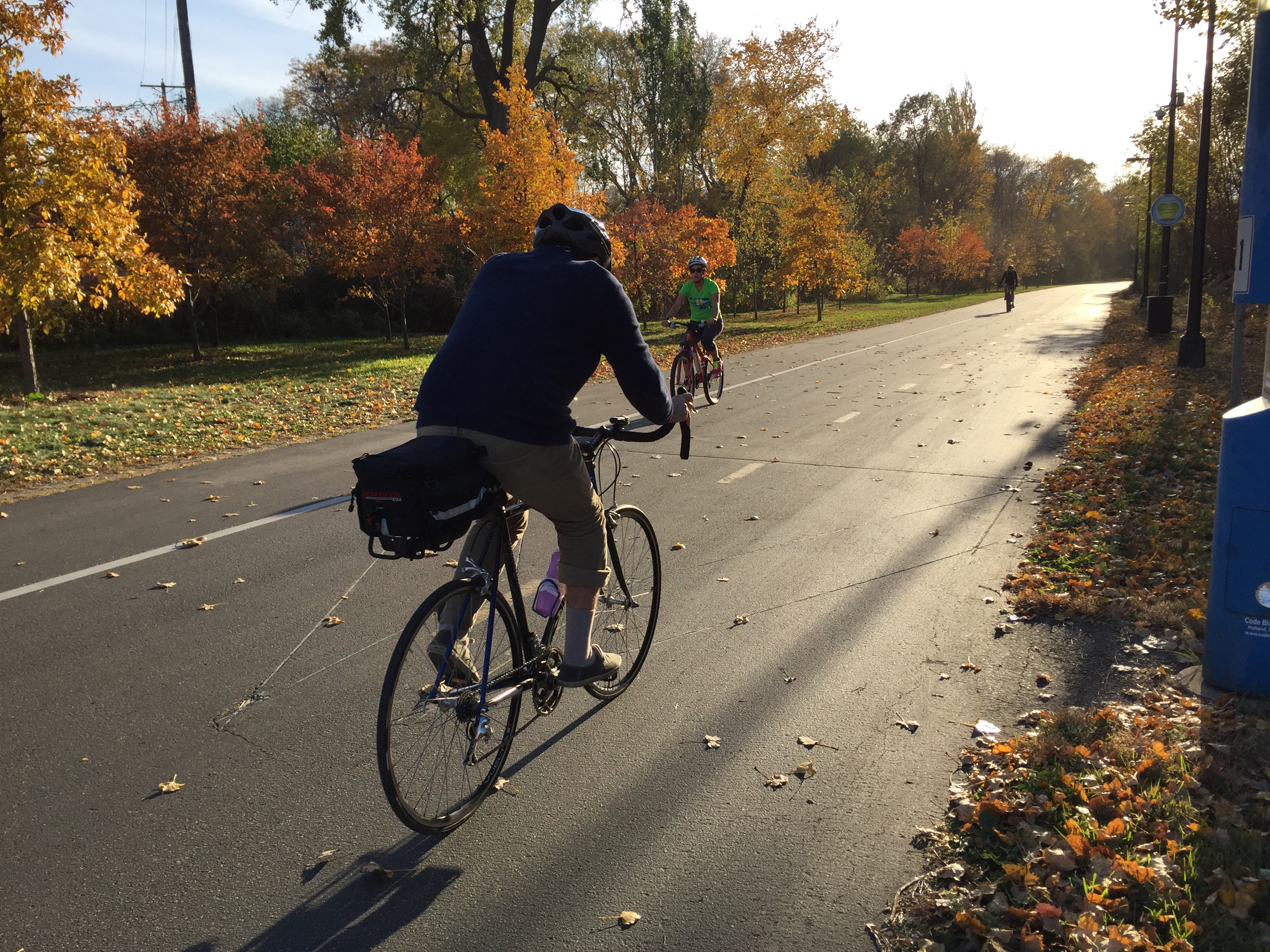
Fall has arrived in the Twin Cities of Minneapolis and Saint Paul, but there are blue skies overhead and still plenty of people out riding bikes, warding off the morning chill with gloves and hats (pictured right).
Continuing to spend time outdoors is part of embracing the season and thriving in a "cold" climate, whether cold means winter temperatures of 30° F or -30° F.
The enormous benefits in terms of health, wealth and happiness that accrue to people who use bicycles and walk all year-round are the reason that many of us here in the Twin Cities believe wintertime active transportation should be taken seriously. And why we're so excited to host the Winter Cycling Congress 2016.
If you haven’t heard of this professional development conference before, here’s what you need to know. The fourth international and first U.S. Winter Cycling Congress will be an opportunity to share best practices related to bicycle and pedestrian planning, designing facilities and networks that take winter into account and to share knowledge about new and innovative maintenance practices.

There’s glory in every season. Here’s one of our favorite #winterglory shots taken on the Stone Arch Bridge in Minneapolis. Do you have a #winterglory shot to share? Share with us on Facebook or Twitter @wintercycle2016. Photo by Connor Cox.
Since most people in North America don’t ride bikes most of the time — much less in winter — the conference is also about getting more people biking and walking period. Changing mobility culture means discussing integration of active transportation with public transportation and shared-use mobility systems, the role of education, the role of the arts and other ways of reaching people of all ages, abilities and backgrounds and empowering them to use active transportation in daily life.
Maybe the best way to explain the Winter Cycling Congress is to share a few lessons learned at previous conferences.
1) Design with winter in mind.
In Oulu, Finland where 50 percent of 13-17 year-olds bicycle year-round, there is a 500-mile biking and walking network, which is separate from the road network. The network connects the places where people live with the places they want to go with safe, comfortable and convenient facilities, so kids can bike to school and seniors can do their shopping. All safety concerns are magnified in winter due to decreased visibility and road surface conditions, providing all the more reason to install protected facilities, or design streets that slow down cars to speeds that are not fatal to humans in the case of a crash. U.S. cities are at the beginning stages of building out active transportation networks — and have the opportunity to design them right from the very beginning. For more of the Oulu story, click here.
2) If you build it, maintain it.
In Toronto, Canada, a new policy will be implemented this year to ensure a high level of service on a network of priority bicycle routes. City planners were able to demonstrate demand for winter cycling facilities and potential for managing road congestion through enabling more cycling. People need to be able to depend on bike routes, the same way drivers depend on roads. Be clear about what routes are clear, if you want people to choose the bike. To read more about how Toronto was able to pass this policy, click here.
3) Make it fun.
Social rides can provide the interested-but-concerned winter cyclist an invaluable reference — “Well, I did try winter cycling that one time, and I didn’t die!” — and the opportunity to learn from more experienced winter bicyclists in a low-pressure situation. You have to get on a bike to figure out the right combination of bike and clothes and come to the realization that staying warm isn’t the problem (it’s usually the opposite). If you can’t find a fun winter ride in your town, consider planning your own. Winter Bike to Work Day is coming up February 12, 2016. Visit the site to find out what kinds of activities other communities have created and to sign-up to engage in friendly competition with other communities around the world.
There are so many more lessons to be learned, and we hope you’ll join us at the Winter Cycling Congress 2016. Minneapolis and Saint Paul may be the coldest large metropolitan area in the U.S., but we planning a warm welcome for delegates with lots of opportunities to get outside and try winter cycling on our unique and ever-evolving bicycling and walking networks. Don’t delay registering, the Arctic Tern (super early bird) discount is only available through Sunday, October 31.
Still unsure that cycling could be real? Check out this video by Anders Swanson of the Winter Cycling Federation and organizer of the Winter Cycling Congress Winnipeg.

